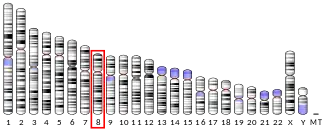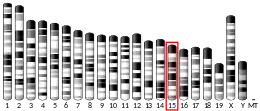| SLC45A4 | |||||||||||||||||||||||||||||||||||||||||||||||||||
|---|---|---|---|---|---|---|---|---|---|---|---|---|---|---|---|---|---|---|---|---|---|---|---|---|---|---|---|---|---|---|---|---|---|---|---|---|---|---|---|---|---|---|---|---|---|---|---|---|---|---|---|
| Identifiers | |||||||||||||||||||||||||||||||||||||||||||||||||||
| Aliases | SLC45A4, solute carrier family 45 member 4 | ||||||||||||||||||||||||||||||||||||||||||||||||||
| External IDs | MGI: 2146236 HomoloGene: 69908 GeneCards: SLC45A4 | ||||||||||||||||||||||||||||||||||||||||||||||||||
| |||||||||||||||||||||||||||||||||||||||||||||||||||
| |||||||||||||||||||||||||||||||||||||||||||||||||||
| |||||||||||||||||||||||||||||||||||||||||||||||||||
| |||||||||||||||||||||||||||||||||||||||||||||||||||
| |||||||||||||||||||||||||||||||||||||||||||||||||||
| Wikidata | |||||||||||||||||||||||||||||||||||||||||||||||||||
| |||||||||||||||||||||||||||||||||||||||||||||||||||
SLC45A4 is a member of the SLC45 family of solute carriers. Analysis of the protein function in a recombinant yeast expression assay show that it can: (i) transport a disaccharide, sucrose, as well simple sugars such as glucose and fructose (ii) perform secondary active transport in a proton-dependent manner.[5]
It is associated with sugar transport in the spermatozoa.[6] Additionally, it has been identified as a necessary component in the cell death caused of the compound paraquat.[7]
References
- 1 2 3 GRCh38: Ensembl release 89: ENSG00000022567 - Ensembl, May 2017
- 1 2 3 GRCm38: Ensembl release 89: ENSMUSG00000079020 - Ensembl, May 2017
- ↑ "Human PubMed Reference:". National Center for Biotechnology Information, U.S. National Library of Medicine.
- ↑ "Mouse PubMed Reference:". National Center for Biotechnology Information, U.S. National Library of Medicine.
- ↑ Bartölke R, Heinisch JJ, Wieczorek H, Vitavska O (December 2014). "Proton-associated sucrose transport of mammalian solute carrier family 45: an analysis in Saccharomyces cerevisiae". The Biochemical Journal. 464 (2): 193–201. doi:10.1042/BJ20140572. PMID 25164149.
- ↑ Vitavska O, Wieczorek H (November 2017). "+/sugar cotransporter in mammalian spermatozoa". Pflügers Archiv. 469 (11): 1433–1442. doi:10.1007/s00424-017-2024-9. PMC 5629229. PMID 28689241.
- ↑ Reczek CR, Birsoy K, Kong H, Martínez-Reyes I, Wang T, Gao P, et al. (December 2017). "A CRISPR screen identifies a pathway required for paraquat-induced cell death". Nature Chemical Biology. 13 (12): 1274–1279. doi:10.1038/nchembio.2499. PMC 5698099. PMID 29058724.
This article is issued from Wikipedia. The text is licensed under Creative Commons - Attribution - Sharealike. Additional terms may apply for the media files.



